While discussing the creation of Triskele’s “Tribal Code” and rituals in a meeting last May, the Catalyst Coaches decided that building renewal rituals into our lives and the fabric of Triskele as an organization must remain a priority. It just so happens that Patricia Welsch-Wolfrom (aka Patti), our multi-talented Aryuvedic guru, acupuncturist, and Nurse Coach was in on the discussion. Patti leads a bi-annual Ayurvedic Retreat at Harmony Hill Retreat Center in Union, WA. When she mentioned there were spaces available in their August weekend, we jumped at the opportunity for deep rejuvenation in an idyllic locale. I’m currently riding the ferry home from what proved to be a magical weekend, facilitated by an incredibly savvy group of holistic practitioners.
 As an organization, Triskele is committed to our own well-being and continually involved in creating policies and rituals that model the work we’re doing in the world, supporting one another to be healthy and productive in the process. In fact, for the past few months we have engaged each other in weekly “Learning Forums”, sharing topics of interest and expertise and building on the collective wisdom of Triskele’s integral holistic framework. A snapshot of our Learning Forum topics: financial incentives for self-insurance, coaching from the integral framework, and an exploration of Holacracy in self-managing systems.
As an organization, Triskele is committed to our own well-being and continually involved in creating policies and rituals that model the work we’re doing in the world, supporting one another to be healthy and productive in the process. In fact, for the past few months we have engaged each other in weekly “Learning Forums”, sharing topics of interest and expertise and building on the collective wisdom of Triskele’s integral holistic framework. A snapshot of our Learning Forum topics: financial incentives for self-insurance, coaching from the integral framework, and an exploration of Holacracy in self-managing systems.
A number of disciplines and several business leaders have influenced Triskele’s path forward. Two of these inspirational thought leaders are Frederic Laloux, author of Reinventing Organizations, and Tony Schwartz, author and founder of The Energy Project. Reinventing Organizations explores compelling case studies of organizations that function at a “Teal” level of evolution: self-managing organizations that embrace a culture of “wholeness” and are connected by a shared purpose.
In Schwartz’s book The Way We’re Working Isn’t Working, he uses an athletic training framework known as periodization (amongst other models) to illustrate how we can improve the health of businesses and their employees with energy management. Periodization refers to how athletes train in cycles, alternating intense workouts with daily recovery in an effort to maximize energy and performance while preventing burnout.
As coaches and consultants we’ll be the first to admit that “balance” is a daily act of constant prioritization and assessment. Collectively the Triskele team is a busy lot: juggling the ever evolving to-do list of growing a new business; managing other contract obligations; parenting children at home or from afar; caring for aging parents; traveling for work, caring for sick friends and family; attending weddings and throwing baby showers; preparing for grandchildren (exciting!); entertaining guests during a beautiful Seattle summer; all the while preserving self-care and relationships- the foundation if we are to maintain everything else.
Retreat Reminder #1: Tabula Rasa, continually clear your slate.
“A single event can awaken within us a stranger totally unknown to us. To live is to be slowly born.” –Antoine d Saint-Exupery

Harmony Hill founder Gretchen Schodde with INCA founders Susan Luck & Barbara Dossey + INCA instructor Dianna Blom
When I first arrived at Harmony Hill, I had to reassess my intention for the weekend: relaxation and renewal. The other times I’ve been to this small piece of heaven, it was to partake in and help teach the International Nurse Coach Association (INCA) credentialing program. The INCA program and nurses I met have permanently changed my life for the better, and I could not be more grateful for them. But my previous trips to Hamony Hill for INCA required intense focus and mental energy: learning and processing a significant amount of information with a brilliant group of new colleagues in a short period of time. This Ayurvedic Retreat had a very different intention: Complete Relaxation. “Tabula Rasa” I thought to myself driving along Washington State Route 106. “Clear your slate. Approach this place as if it is your first time, being open and present for all that is to come.”
Upon arrival, I was greeted by Denise, Harmony’s Hill’s lovely yoga instructor. She mentioned that there was a heron nest next to the office and that I should check it out. She also said when the birds are calling to one other, they sound prehistoric, like dinosaurs. “Delightful!” I thought. Harmony Hill is already a magically peaceful environment that connects us to the earth and our internal wisdom. It’s a place where one cannot help but be open to new possibilities as the chaotic pace of our daily life fades to the background. The natural setting and quiet allow us to reconnect with purpose- to the energy around us and within ourselves.
I privately decided dinosaurs and listening for primal purpose (which obviously go hand in hand) would be my themes for the weekend, decorating my nametag and white lunch sack (function still T.B.D.) with little baby dinosaur eggs and flying Pterodactyl stickers (in blue and green a la Seahawks of course). The welcome creative activity was satisfying and relaxing as we prepared for activities to come.
Retreat Reminder #2: Learn to let go of attachment and your agenda.
“There are only two ways to live your life. One is as though nothing is a miracle. The other is as if everything is.” –Albert Einstein
The weekend opened and closed with a ceremony in the Great Hall. At the beginning on Friday evening, we gathered in a circle and then in small groups, setting an intention for why we had come to the retreat and what we’d like to take away from it. Words couldn’t appropriately describe this experience or the brilliance and ease with which Patti guided us- nor can I speak from any perspective other than my own. We were each there for a reason, both individually and as a group.
After a relaxing session with singing bowls and yoga breathing, we were asked to walk to a table where a number of envelopes lay with cards inside them. We were each to select one card that we felt called to and return to small groups. After a number of thought-provoking questions from Patti about our intentions for the retreat and our lives, we were ultimately asked to return the envelopes without ever being able to see what was inside. We didn’t even get to peak inside the cards! – especially after all the exciting build up about setting an intention and selecting “the card that is calling to you”. I couldn’t help but giggle at Patti’s brilliance. Learn to let go of attachment and your agenda.
Retreat Reminder #3: Sometimes less is more.
“Simplicity is the ultimate sophistication.” –Leonardo da Vinci
Retreat offerings over the course of the weekend were optional, all focused on relaxation and balance. Ayurveda means “The Science of Life.” Obviously, we could have spent years on any one of the topics covered, but the activities and discussions offered a variety of Ayurvedic principles, condensed into bite sized pieces and open for further exploration. We learned our Dosha types and how to balance each type- Kapha, Pitta, and Vata. Morning yoga and dancing, walking the labyrinth, kayaking and watersports, and in the evening playing games (homemade versions of Charades and Balderdash) allowed us more insight into the quirky sense of humor everyone brought to the table.
Even though the retreat offered a nonstop menu of fun and relaxing options, simple instructions on the front of our retreat binder read, “Be here for yourself ONLY.” I’ve often found myself at networking events or conferences where connecting, learning, researching, and brainstorming all simultaneously is the norm. This was different, or so the “rules” said: If you need to just spend time alone and being quiet, go for it. Sometimes less is more.
Dhaval Dhru, M.D. is the Department Chair of the Ayurvedic Sciences in the School of Traditional World Medicines and lectures at Bastyr University.
Of the many things Dhaval taught us over the weekend, a few new pieces of information struck my fancy for future incorporation: when eating a meal, it is recommended that we not only take in a full sensory experience of the food before taking the first bite, but also consider the rule of thirds:
- 1/3 of your meal should be liquid, like soup
- 1/3 should be solid
- 1/3 of your stomach should be left empty to allow room for digestion to take place.
This was perhaps also the first time I heard a provider offer the advice that if you’re not hungry in the morning, don’t force yourself to eat breakfast. The goal is maintain a rigorous metabolism or as Dhaval called it “digestive fire.” This includes only eating when hungry and taking in the whole sensory experience of the foods we eat, appreciating their colors, textures, smells, and finally the taste, all while being relaxed and focused on eating- and nothing else. Our bodies are our best teachers and sometimes our best doctors. Turn up its volume every time you sit down to a meal, noticing what it’s truly hungry for and how the food you put into it makes you feel. Sometimes less is more.
Retreat Reminder #4: Minimize toxins in, Maximize toxins out.
“The real voyage of discovery consists not in seeking new landscapes, but in having new eyes.” -Marcel Proust
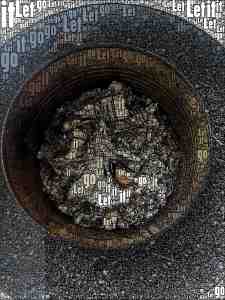 Denise Frakes and her husband Dallas, owners of Blue Sky Services, also helped facilitate the retreat. They not only have 24 years of experience cleaning homes, but they teach a number of classes and workshops focused on helping people create healthy lives, inside and out. Both Denise and Dallas have a joyful, fun-loving presence and a playful relationship even after being together since high school. Not to mention they look about half their age!
Denise Frakes and her husband Dallas, owners of Blue Sky Services, also helped facilitate the retreat. They not only have 24 years of experience cleaning homes, but they teach a number of classes and workshops focused on helping people create healthy lives, inside and out. Both Denise and Dallas have a joyful, fun-loving presence and a playful relationship even after being together since high school. Not to mention they look about half their age!
On Saturday, Denise gave a talk on “detoxifying our lives”. She shared an account of having her own health challenge wherein every medical doctor she saw kept prescribing drugs rather than being curious about the source of her pain. Denise felt there was a better solution for her than to bandage symptoms, so she began a long journey of detoxifying her life, starting with looking at the cleaning products they were using and their diet. She says her rule of thumb with herself and clients is always to take things out of the equation before adding things in. “Where can you simplify?” she asks when looking at eliminating toxins.
Denise passed around fresh herbs from her garden and shared secrets of her homemade beauty product routine, giving us each samples of the sunscreen they made (before we mixed our own bath salt scrubs with essential oils!).
Denise’s talk hit home for me, having learned quite a bit about environmental health working with Health Care Without Harm. But there’s nothing more compelling to me than hearing the story of Denise’s struggling and now witnessing her glowing, ethereal beauty as she shared her truth. She had nothing to sell to us, no political agenda, only a desire to share the secret of her vitality- and it’s cheaper and easier than the complex self-care routines any beauty magazine would have us follow, not to mention often healthier.
You were probably guessing where I’m headed next: this also goes for minimizing toxins that decrease your energy and maximizing things that increase your spirits. Each of us represents a quantum field of energy in the form of a human body. Our physical, emotional, mental, and spiritual health all play into the frequency of our field and the energy we give and receive. Most of us are victim to field invasion and energy drain via digital overstimulation, especially if being in front of a computer much of the day is necessary for work. Consider the choices within your control, doing your very best to maintain the sacredness of your field and take responsibility for minimizing toxins in, maximizing toxins out. This includes everything from foods we eat, the products we put on our bodies and in our homes, the information we read and absorb, as well as the relationships in our lives. We all have more control than we realize, and often it begins with where we choose to focus on giving and receiving energy. Claim it!
p.s. If you’re curious, a movie was released this year talking about environmental chemicals in our everyday life: http://thehumanexperimentmovie.com/
Retreat Reminder #5: Intention is everything.
“One paradigm after another is shifting. The volume of information at our disposal is, in fact, leading to less rather than more certainty.” – Janice Marturano, former VP of General Mills & founder of the Institute for Mindful Leadership
I’ll likely soon forget some of the mindful eating and Ayurvedic nutrition protocol such as chewing each bite 32 times (already forgotten~), not combining melon with dairy, etc. One topic I will retain are the principles of intention, particularly in mindful eating- only eating when very hungry, taking time to bless our food as we cook it, being relaxed and giving thanks as we sit down to enjoy a meal with others, really savoring every bite. My intention with every meal should be to experience its pleasure and purpose, appreciating the energy it provides my body and soul, and trusting that maximum nourishment will be absorbed.
Two universal intentions align with our primal purpose as humans: to seek pleasure and avoid pain. We often grow so deeply ingrained in our behavioral habits, whether thoughts or actions, that we fail to notice when we are the source of our own pain, missing out on opportunities for pleasure. This is human nature, and we can reprogram ourselves by regularly setting intention.
I often share with the clients the fact that in a given day the average person has about 50,000 to 70,000 thoughts. About HALF of these are mindless or automatic, i.e. habit loops not focused on the task at hand. We also know that being intentionally mindful (or focused) in our thoughts and actions improves emotional well-being (and I don’t just mean meditating while sitting in lotus). A critical piece of this is to first notice your automatic judgments, self-talk, and “truths versus stories” (is it a subjective thought or objective fact?). Part of our hardwiring includes the tendency to quickly evaluate our environment and the people around us in an effort to avoid pain and seek pleasure. Intention is everything.
Retreat Reminder #6: Listen to the wisdom of the whole.
“I am not what happened to me, I am what I choose to become.” –Carl Jung
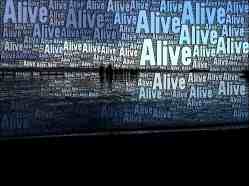 Before leaving today Patti had everyone gather for a closing ceremony. We began in the same way as the opening ceremony- in a circle and preparing to approach the tables that held those elusive cards. Again she asked each of us to select a card and return to the circle. She said to hold them thoughtfully, offering gratitude for whatever was inside, knowing that this card held exactly what we needed. Then we passed them to the left. More mind tricks! Patti sure knows how to instill patience and curiosity!
Before leaving today Patti had everyone gather for a closing ceremony. We began in the same way as the opening ceremony- in a circle and preparing to approach the tables that held those elusive cards. Again she asked each of us to select a card and return to the circle. She said to hold them thoughtfully, offering gratitude for whatever was inside, knowing that this card held exactly what we needed. Then we passed them to the left. More mind tricks! Patti sure knows how to instill patience and curiosity!
Without going into too much detail, I’ll share that we ultimately got to privately view and interpret two cards with photo collages and phrases printed on the inside. At the end we huddled in small groups to share our personal interpretation of the collective message held in the randomly three cards. “What is the ‘wisdom of the whole’ or theme of these cards for each of us?”. Without sharing my images or interpretations, the messages in my cards included the words “Relaxation” and “Crystal Clear Vision.” A powerful discussion followed in each small group.
Ultimately Patti is not only an energetic healer, she is firmly grounded in the universal understanding that intention is everything. By blessing and continually passing along the card we thought was for us, we let go of our agenda and strengthened gratitude with each passing. Patti said the cards were each handmade and blessed with the expectation that the images and messages would reach the person who needed them. She also knew that when given an opportunity to set an intention before opening our cards, each of us would find our own personal meaning in the card we received, no matter which we received. Each card’s meaning and value was in the eye of the beholder. So it is with life…
Over the course of the weekend, my mind wandered to some of the incredible coaching clients I’ve had the pleasure of working with, and in particular someone I met while training at Harmony Hill with INCA. Although this client offered to share her story, for privacy reasons I will call her Rachel:
Rachel is a bright, energetic yoga instructor in her early 40’s who I met shortly after she’d had several significant life transitions. Not only had both her parents passed away in the past five years (her mother in the last six months), but she was also in the process of separating from her partner of 15 years. Rachel shared that she was feeling fear and anxiety around navigating the next chapter in her life and stated that she deeply longed to be in touch with her own feelings and confident in expressing them, but that overwhelming in light of recent events in her life. She needed to take life once step at a time.
Rachel came to me for nurse coaching, presenting with this desire to fully express herself as well as physical symptoms she referred to as her “Throat Thing.” She described this as a feeling a blockage in the throat while eating or during conversation and originally believed it was related to a food allergy. She explained that she was also dealing with Candida, having adjusted to an anti-inflammatory diet and had several tests to explore whether her symptoms were related to food allergies, digestive or reflex issues. All of the tests had come out negative, and several practitioners were unable to diagnose or help treat her “Throat Thing”.
During our first session together, I opened us in a guided meditation “Letting Go”, and Rachel began to intimately share her experience with the “Throat Thing” further. She said it was getting worse, making her nervous and uncomfortable in social situations. Rachel said she also began to notice her episodes often coincided with conversations that involved painful emotions. We discussed the fact that she is a yoga instructor and practitioner and has extensive knowledge around nutritional healing. Rachel’s wisdom of the whole of her body is highly evolved; she has spent years developing and listening to the network of connections that her mind and body exchange to communicate what she needs and when. This is why the Throat Thing was so frustrating to Rachel: never had a physical symptom manifested in this way that she wasn’t able to identify and heal.
After our session, I researched Rachel’s symptoms and brought it to the group of nurse coaches I was training with to discuss her case. Within my small group was our retreat leader Patti Wolfrom. Her extensive knowledge of acupuncture and Chinese Medicine allowed her to almost immediately identify Rachel’s case as “Plum Pit Qi”, a condition in Chinese Medicine indicating a build up of phlegm in the throat caused by the stagnation of strong emotions.
During our next session, Rachel was delighted to learn her Throat Thing had a recognized diagnosis, even if it was in Eastern Medicine. She grew in her own self-awareness and confidence during our subsequent coaching sessions, stating, “I’ve started acknowledging that this is anxiety based. I recently realized the second this begins happening I now tell myself, ‘It is ok. I don’t need to respond to someone else’s anxiety or ignore my own by getting sick’.” After brainstorming practices to support Rachel’s vision and wellness goals, she began incorporating rituals into her self-care that involved Throat Chakra Opening techniques as well as communication practices to “feel comfortable expressing my true self without judgment.”
Upon the completion of our time together, Rachel decided to move back to her hometown near her sister and is now in a new fulfilling relationship. In a recent email Rachel shared, “Yes, life is REALLY good! I am so grateful I just kept open to the possibilities, because I didn’t know I could feel this happy with someone! My sister and I are also getting closer all the time…I feel really good over all- have gotten rid of the Throat Thing, lost some weight, and am exploring my yoga practice as my injury is healing.”
I cannot tell you how many times I have personally experienced the connection between emotional or mental stress and physical symptoms. As a yoga instructor, I also have students share all the time how their practice has helped manage or heal a chronic disease or injury (Rheumatoid Arthritis, Parkinson’s, orthopedic surgeries, and more). Personally I was diagnosed with Celiac Disease and Hypothyroidism about five years ago. Although learning to manage these did not happen overnight, those turning points took my self awareness and self-care to a whole new level, partially because until that point of discovery, I had no idea how much better I could feel on a daily basis.
Our bodies speak to us in whispers, and developing that deep level of intuitive conscious awareness bleeds over into all relationships and areas of our lives. When we explore medicine from integral and holistic frameworks, we shift away from an “either or” to a “both and” perspective. Perhaps it’s not “either Western or Eastern medicine” but “both Eastern and Western medicine”, depending on the needs and desires of the patient. “Include, embrace, and transcend” as Master Coach and nurse Linda Bark puts it. As coaches we incorporate integral and holistic, combining levels of consciousness- mental, physical, emotional, spiritual- and listening to the intuitive wisdom of the whole person.
The key to successful coaching no matter your field or experience is the art of being present with the client. Of listening as if there is no one else in the world but your client- to the nonverbal clues, the energy in their voice, the expression on their face and body language, noticing if they are holding back from sharing all they need to share. Judy Blume, Triskele Executive Coach and Founder Thinkwell, said of her training with Accomplishment Coaching: “They give us over 300 tools to use with clients, but of course they are all useless without presence.”
The foundation of being able to be fully present with clients begins first with learning to listen deeply to yourself and the wisdom of your whole- honoring the insight it shares. When my body subtly tells me I need a 20-minute power nap instead of afternoon coffee, or knowing how to differentiate between a dehydrated need for water versus a 2:00pm craving for sugar- they are often skillfully disguised as one in the same. When we are able to listen to and truly love ourselves, our ability to fully hold space for others is exponentially maximized.
Self-care is the foundation of all health care, and it is the key to success for many business leaders. Truly embracing the value of employee well-being is shifting our organizations and cultures toward one that prioritizes people in a way that will make the ritual of retreat mainstream for more and more companies. Triskele is working to leverage the group nature of health while promoting individual self-care and periodization, ultimately improving overall business health in the process.
Arriving at the Bremerton Ferry terminal en route back to Seattle, I settled into a sunny spot on the deck and opened the white paper lunch sack with dinosaur stickers (its purpose no longer T.B.D.). Inside were a number of hand-written cards from other retreat participants. Some were kind notes from colleagues I already knew fairly well; others were notes from people I’d only spoken to a couple times over the weekend. Each held funny and thoughtful words I will treasure from our weekend. And then I noticed a final card in a blank white envelope like the cards we’d selected during the opening and closing ceremony. I opened it with care and on the inside found a collage of a beautiful calico kitten with its head cocked to the side, staring at me with piercing crystal blue eyes. I took in the image on the outside of the card for a moment before opening it. On the inside was one word in bold, black font, the final piece of my puzzle retreat: “Faith.”

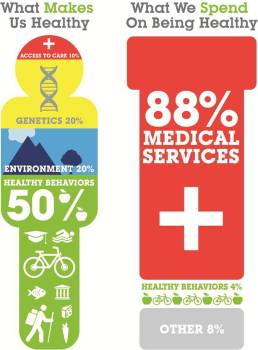
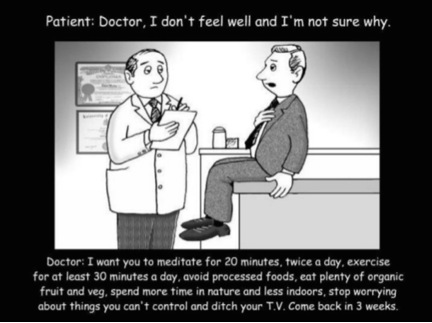 Then, when I finally met Triskele Collaborative’s visionary founder Kim Adams (also a nurse!), I knew I was in alignment with my purpose. The people and organizations that have been attracted to Triskele’s work finally feel like “my tribe”. We are looking at and health and well-being from a systems perspective and helping businesses re-design the way they do business, from the micro to the macrocosm. This group has waded far, far upstream and joined the movement of edge runners1 who have begun throwing out the life rafts. We can change the system and we are, but we need all hands on deck.
Then, when I finally met Triskele Collaborative’s visionary founder Kim Adams (also a nurse!), I knew I was in alignment with my purpose. The people and organizations that have been attracted to Triskele’s work finally feel like “my tribe”. We are looking at and health and well-being from a systems perspective and helping businesses re-design the way they do business, from the micro to the macrocosm. This group has waded far, far upstream and joined the movement of edge runners1 who have begun throwing out the life rafts. We can change the system and we are, but we need all hands on deck. I am thankful to be back in the U.S. of A. after a phenomenal two-week yoga teacher training: Tony Sanchez’s 84 Asanas Master Core System in Los Cabos, Mexico. Doing a hot yoga “tt” is something that’s been on my bucket list since 2010, at least. Although I wasn’t even familiar with Tony four years ago, I feel very fortunate that fate has once again intervened and manifested this dream in a way that’s even more fulfilling and aligned with my life values than the plans I’d been aspiring toward back then. Read more about Tony and his amazing training workshops on his website:
I am thankful to be back in the U.S. of A. after a phenomenal two-week yoga teacher training: Tony Sanchez’s 84 Asanas Master Core System in Los Cabos, Mexico. Doing a hot yoga “tt” is something that’s been on my bucket list since 2010, at least. Although I wasn’t even familiar with Tony four years ago, I feel very fortunate that fate has once again intervened and manifested this dream in a way that’s even more fulfilling and aligned with my life values than the plans I’d been aspiring toward back then. Read more about Tony and his amazing training workshops on his website: 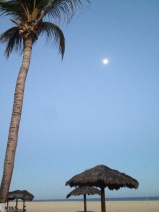

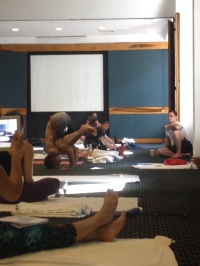
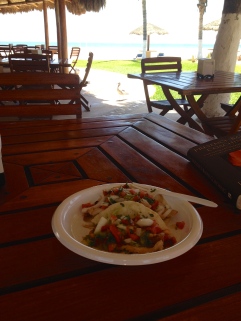
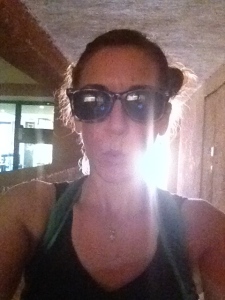
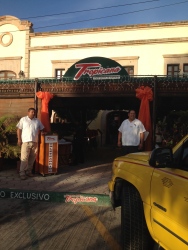
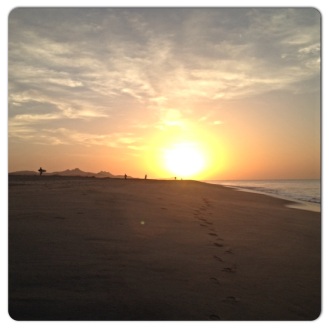
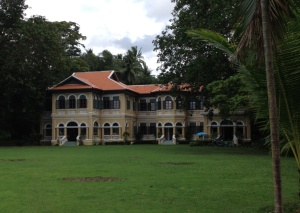

















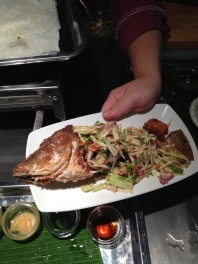
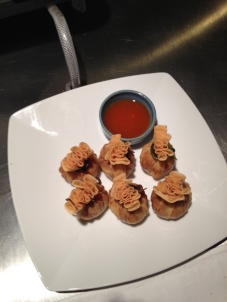
 Whew! I’m actually quite thankful that it rained for about three days and cooled the air a bit because the combination of daily Bikram yoga, sultry tropical air, and eating spicy food as much as possible has me feeling positively… well wet! As I was coming back from a short run around the Bang Wad Reservior and Phuket Country Club Golf Course, I stopped by the Bikram office to say hello to Sono for a chat. “Are you wet from sweating or the rain?” Sono asked. It had just finished pouring, but I’d also just been on my first real run since arriving. “Both!” I exclaimed. It seems as though I’ve been dewey or soaking ever since arriving, whether it be in a Bikram class, in the sweltering heat with a bike helmet on, or in one of the daily (albeit brief) monsoon rain showers. I must’ve quit noticing. Glad I remembered to wear this waterproof Seattle skin!
Whew! I’m actually quite thankful that it rained for about three days and cooled the air a bit because the combination of daily Bikram yoga, sultry tropical air, and eating spicy food as much as possible has me feeling positively… well wet! As I was coming back from a short run around the Bang Wad Reservior and Phuket Country Club Golf Course, I stopped by the Bikram office to say hello to Sono for a chat. “Are you wet from sweating or the rain?” Sono asked. It had just finished pouring, but I’d also just been on my first real run since arriving. “Both!” I exclaimed. It seems as though I’ve been dewey or soaking ever since arriving, whether it be in a Bikram class, in the sweltering heat with a bike helmet on, or in one of the daily (albeit brief) monsoon rain showers. I must’ve quit noticing. Glad I remembered to wear this waterproof Seattle skin!



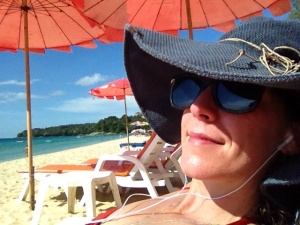 This may never get old. Scorching sun almost everyday. Monsooning rains almost every night. Ahhh…
This may never get old. Scorching sun almost everyday. Monsooning rains almost every night. Ahhh…

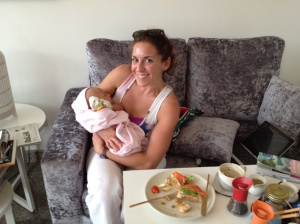







 ”
”